Day 0
After a series of very long airline flights, we finally arrived in Mendoza
somewhat tired and weary, but anxious to get the logistics started so we could
get on the mountain. We stayed at a very cramped and overpriced hotel -Nuttabara.
I'm not picky at all, but we didn't even have enough space in the room to sort
gear. We would find hotel nirvana after the climb with Hotel Aconcagua- a
much nicer and better priced place. We lucked upon a climbing shop that
pointed us to XA (Xperience Aconcagua) and a very helpful man named Eduardo that
really helped us out. He drew on a map where to go for the money exchange,
climbing permit, paying for the permit, and food market etc. He arranged for us to
get our mules, and to get transport to the trailhead. Meeting him saved us half a
day of logistics.
Day 1
We took the 3.5 hour drive in the XA van along with a guided trek group and
met a nice guide named Jim that gave us great information about the climb.
We dropped off our mule bags and at Los Puquios and paid $130 for 1 mule (3
bags). We then went to the Horcones Ranger Station at about 9,900 feet and
checked in. We were psyched to be starting the mountain adventure on day 2
and we hiked rather easily past the tourists near Lagunas Horcones and made our
way to the first camp site at 11,000 feet- Confluencia. We made our camp
on a dry little area and utilized the nearby water source. This water
source was basically just a stream coming down from a side valley and was our
first introduction to the "laxative" water of this camp. I took a walk up
the Almacenes side creek and looked down upon the camp. The hike in to
Confluencia only took us 2 hours to go the 4 miles, yet it was hot and dusty so
I took a creek bath. We settled in to the warmest camp we would enjoy as
my -40 Feathered Friends sleeping bag would never come close to being zipped up
at this camp.
![Windy Ridge]()
Day 2
With every paid climbing permit on Aconcagua, an emergency helicopter rescue
is covered. Essentially they are forcing you to buy the insurance in the
form of the permit fee. This manifests itself on the mountain at each
medical tent with very thorough and stringent medical exams. It's in their
best interest for the recommendations to be extra days rest and acclimization;
it will save them having to rescue you down the line if they can convince you to
take it slow. Both my partner and I were told to spend another night at
11,000. We were under the thinking that we wanted to get to 14,000 feet and
spend the time there resting and acclimating. In hindsight it may not have
been the wisest choice to go from Mendoza at 2800 feet to Plaza De Mulas at
14,300 in just over 24 hours, but that's what we did.
We headed out of Confluencia at 11,000 feet and made the long, hot, and dry
trek up the Horcones Valley. This portion of the climb is a long 12 miles
that gradually climbs to 14,300 feet. Protection from the sun and finding
a water source are real concerns during this leg. Once we left the
Horcones Superior, we found a side stream of water and treated it with iodine
tablets. The water still had silt (dirt) in it and we were so thirsty that
it didn't matter. The last portion of this days climbs the steepest, and
after 8 hours of hiking we reached Plaza De Mulas fairly exhausted. I was
surprised that I felt the altitude slowing me down, but not really after
thinking about how far we had come. Arriving at the Plaza, we had no idea
about the ground rules- you basically are provided with a toilet and water by
your mule service, and you must pitch your tent in that particular area.
Unfortunately there were few tent sites available so we had to settle for a site
on the fringe right off the Camp Canada trail close to the water, but far from
the toilet. The drinking water, by the way, is provided in a blue canister
and it appears that everyone drinks it without much thought on boiling it.
The source of this water is just from a small runoff coming down the mountain.
It was about this time that my Imodium was coming in handy.
We settled in and it didn't get dark until about 10:30pm. We were
awoken at 3am by hooting and hollering and celebrations of various types.
Apparently a group was celebrating it's summit day. The earplugs come in
handy for noisy neighbors, noisy tent mates, or noisy wind on the tent.
Day 3
Sunlight hit our tent at 10:25am and I realized that no ones gets going at
these low camps until the sun hits. We spent this day resting and I hiked
over to the Hotel Refugio which is about a 25 minute walk from Mulas. This
amazing structure offers meals, lodging, showers, phone, internet, and supplies
for money. I was able to call home and check in and it only cost 3 pesos
for a 3 minute call (about $1.00). Interestingly, sending email and
utilizing the internet cost more than the call. I hiked back over to camp
and checked out the Penitentes-strange snow and ice formations found at high
altitudes. They are formed by sublimation which occurs when the dew point
continually stays below zero.
I returned to camp and enjoyed the very mild temperatures, as this would be
the beginning of the end of the warmest temperatures. The weather on
these first few days would be absolute blue skies. Each subsequent day a few
clouds would form in the afternoon and then over the summit. By the time
we moved up, the afternoon clouds became afternoon snow showers. It was a very
gradual, but apparent change, yet the barometer would remain steady as a rock.
On my rest day I met some others from Brazil and Mexico. Even at this relatively low elevation
people are laboring and out of breathe just walking around camp. I waited
for my appetite to increase and it never seemed to come back.
Day 4
I woke up at 5am with a cough which was no surprise since my partner had
one for a couple of days now. Nearly 3 out of every 4 people on this
mountain seem to have some type of cough. At the time I was very concerned
about an illness of some type, but given the fact that our coughs disappeared
the day we got off the mountain I have to chalk it up to the cold, altitude,
dust, mules etc- some type of allergy or such.
We gathered our supplies and decided to make a cache run to Camp Canada at
16,000 feet. We filled the packs with food, fuel, and other high camp
items and made the slow steep trek. The section out of Mulas is perhaps
one of the steepest on the mountain as the trail gains 2000 feet is less than 1
mile. After 3.5 hours we found a decent site at Camp Canada, which would
be my least favorite camp, and dropped the load. We spent a little time there
trying to adhere to the climb high / sleep low mantra. We screamed
back down to Mulas and enjoyed the relatively oxygen rich camp. At Camp
Canada I spotted a cigarette butt on a rock and this would be a continual theme.
Things are different down here as many, many people smoke. We would find
cigarette butts all the way up to 19,300 feet and many guides, porters, and
muleteers all smoke. Amazingly, it didn't seem to affect the performance
of anyone.
Day 5
We decided another rest day was in order given how we were feeling (not
energetic). This was okay since we had lots of time, and we had hustled up
to the 14,300 camp. Many consider this mountain pretty filthy and dirty
and I was skeptical about these claims given how big this mountain is, and how
those types of things usually don't affect me. The rangers give you a bag to
defecate in, and your supposed to haul it all out with you. We continually
found used toilet paper next to every prominent and not so prominent rock.
Near Conway Rocks, we found one collection of 35 defecations, all
from this climbing season. It was clear to us that the current system is
not working and they need to install solar toilets or such at each camp.
Even at Mulas where they do have pit toilets, they are kept in poor
condition and the water source for the whole camp lies just a few feet from many
tents. Unlike Denali, where the glaciers can "hide" the
trash in the crevasses, Aconcagua's trash is plainly visible.
Day 6
After a good stint at Plaza De Mulas, it was time to move camp up. We
said goodbye to daytime highs of 40-50 F and night time lows of 20-30 F.
We left our mule bags with our mule company storage tent, and cached some
unnecessary items and extra food. I was eating less than half of what I
budgeted for each day in calories. Our second trip up to Camp Canada went
fine, and we eventually got to camp and immediately realized that there was no
good water source nearby. Our choices were to melt snow, which is slow and
uses fuel, or treat silty water and grit our teeth while we drink(to strain the
dirt). We went with dirty water and it was tough to drink the 5 liters per
day that's recommended. Camp Canada is a tiny little camp on an
exposed flank and we didn't plan on spending too long here.
Day 7
I woke up feeling pretty good and realized that I'm now getting stronger. We gathered together food and fuel for a cache
run to Nido De Condores at 17,700 feet. The slope out of Camp Canada isn't
too bad until it nearly crests at a prominent ridge at 17,100 feet. We
were looking for a water source, but unfortunately the stream we were counting
on were frozen solid, so we went dry for a while until we found another dirty trickle
to drink from. Just above the rise we passed Camp Alaska, an intermediate
camp that should be avoided given it's exposure. We made our way through a
field of Penitentes and eventually topped out at Camp Nido in about 3 hours.
Nido is spread out and there are many decent sites if you look around. We found a
good, protected site next to a tall rock just under the ranger tent. We
dropped our load and covered it with rocks. It's noticeably windier and colder
here. We returned back to Camp Canada to eat and sleep. I use my down jacket
more just for cooking and anything outside the tent. I find amongst my very
bland and dull dried food, the Southwest Mashed Potatoes are the best food I
have. Luckily, I have many servings of this and still it's tough to eat more
than about 400 calories per meal. We experience our first big snow squall
of the trip in the evening, then it clears.
![Almacenes Mtn]()
Day 8
We move our camp up to Nido De Condores at 17,700 feet. Our spot is
fairly protected there and we find a small pond for water, yet we melt snow also
for water. We utilize the XGK stoves for melting water now. Right
after we get our camp set up, water boiled, and a rock wall built around the
tent, we get a pretty big snow shower that covers everything in white. I
walk around to try and get a weather report, and via word of mouth the weather
will be good for 2 days, then a wind storm. I visit the ranger station
above us and they give us a very crude forecast along the same lines. Our
peaceful site is disrupted when a large group of Polish climbers make camp right
next to us. I can't understand the language, but it sounds as if there's a
constant man to man challenge going on. There's 6-8 of them and it's
pretty noisy- too bad my IPod stopped working at 17,000 feet (the drive just
spins).
Day 9
We start out to make the cache up to 19,300 feet and I'm starting to get
pretty excited. In fact I'm super pumped up and feeling better than ever. My
partner is tired though, so I take both our caches up to White Rocks / Colera.
White Rocks is an alternative camp site recommended for better shelter, more
space, less trash, and it's a little higher. I keep in touch with Alan in
the tent via two way radio. After I drop the load at 19,300 and start
down, it begins to snow and howl some. I reach the tent at Nido in less than 1
hour. The Polish climbers add yet another tent to their conglomeration
next to us. I try to drink lots of fluids and cram down a little food.
I actually crave some foods with fat or protein, yet I'm stuck with dehydrated
rice and beans. We start talking about those Pepperidge Farms Salami
Sticks.
Day 10
Despite the predictions of impending wind, we make the trek up to White Rocks
and move our camp. My partner is still tired, so I assist with some of the
weight near the top. We pass Lower Berlin Camp where there's 2 small huts.
White Rocks is reached by traversing left from here and climbing through some
steep rocks to a hidden flat area. We find a sweet spot behind a rock and
make camp. Making camp at 19,300 feet is a really slow process- every
little thing makes you feel like you just sprinted. Just after we set up
camp we get hit with a thunder snow shower. The thunder is actually below
us as we are above the base clouds. Dinner is cooked via the vestibule so
we don't have to go outside. We wake up in the middle of the night with a large
amount of frost inside the tent on everything (condensation). We have the
choice to open and vent the tent and freeze, or keep it closed and get the
frost. I also have the choice of covering my face in my sleeping bag to
keep warm and feel like I'm suffocating from a lack of oxygen, or keep my head
out and be cold. I choose the later.
![Hut Independencia]()
Day 11
This day is spent as a rest / preparation day for summit day. We spend over 4
hours collecting and melting snow to get enough water for today and summit day.
It takes longer to boil water at this altitude. This is the first day I
haven't done much in a while and I feel lethargic. I'm also thinking through
things for summit day and packing, so I'm very focused and quiet. Tomorrow
is the big day and I want to be ready. Later I try giving Sudoku a go and
it's pointless. I was able to do well with that at 14,000 feet, but not
here. The latest forecast is for windy conditions and then clearing.
We figure that's a decent forecast and in hindsight we were correct. There
was some very poor weather right after we summitted.
During the night, getting out of my sleeping bag to go pee in the pee bottle
is a huge effort. By the time I'm done doing that, I'm huffing and puffing
and completely gassed- it's quite amazing. I don't sleep great with the
anticipation of 4:40am. It will be the first day that we have to get up
early and it will be frigid. The packs will be relatively light for once
tomorrow. We basically will have water, food, camera, and extra clothes in
our pack. The water will have to be inside the down coat to keep from
freezing. We both have some really bizarre dreams.
Day 12
We get started on the trail by headlamp at 5:15am amongst various other
groups. Everyone is completely anonymous to each other all bundled in huge
down jackets, goggles, and balaclavas. For 4-5 hours the cold and wind is
absolutely punishing. My partner must stop and use chemical heat pads to
try and save his toes and fingers. The first rays of sun offer a
psychological lift as we approach Hut Independcia at 20,700 feet. This
dilapidated hut would offer scant protection in an emergency. Here we put
on our cramp-ons as the slope above steepens and becomes snowy and icy. A
major blunder is revealed to me as I realize that I have my strap on style
cramp-ons and I need the step in kind. I'm able to rig one of the
cramp-ons to stay on my right foot. We proceed on, and reach Windy Ridge
where true to it's name a fierce wind cuts from our right side. It's here where
we both most likely suffer our frostbite. We both get it on our right
thumbs where the wind was cutting across. Alan ends up with a black,
frostbitten thumb while I escape with just a mild version. I had on an OR
Expedition 3 layer glove/mitt system.
We traverse Windy Ridge to an area under a prominent rock called El Dedo or
the Finger. Many people rest here under the relative shelter of this rock.
This is the base of the infamous Canaleta at about 21,400 feet. From here,
we may have caught a break in that the Canaleta was 50% covered in snow, so the
scrambling wasn't too bad. I felt the altitude slightly here for the first
time (headache, light headed etc) yet I was making good progress passing a few
people here and there. It was quite amazing to see all the people
completely stopped, hunched over, or laying down in this section. Just
above the Canaleta, I reached the ridge that runs from near the south
summit toward the north summit called the Guanaco Ridge. I didn't quite
believe that the summit would be just above this, but it was, and I was standing
upon the tallest point in the southern and western hemisphere. Other
people hugged, collapsed, and rested. I took video, pictures and signed
the summit log. I was excited and happy, but like most times I knew I
couldn't linger. I had reached the summit in 10 hours. The weather
was becoming hit or miss. One minute it was sunny, then we were in a
cloud. On my way down I saw Alan and encouraged him to continue on, and to
his credit he did, and made it.
The one cramp-on deal wasn't a problem on the way up, but on the descent it
was slow going over the wind blown and icy slopes. I had to do a funky one foot
slide down the steep slopes. I passed through some heavier snow showers
and as I got close to camp. I utilized my GPS just to be absolutely sure that I
didn't accidentally turn onto the Polish Glacier Traverse or such. It was
getting late and cold again and getting off track at this altitude would be
really dangerous. I rarely use the GPS and ultimately I was right on
track, but the consequence was too great of getting lost. A night lost on
this mountain could easily mean freezing to death. I reached camp and gave
a few victory dances and got changed. I then got on the two way radio with Alan
and before long he was back to camp and I sighed another breathe of relief.
I got water and food ready for us and then we crashed hard and slept the sleep
of champions.
Day 13
It would have been easy to just loaf at 19,300 the next day and given the
exertion from summit day it was tempting. However, I was eager to
get back to 14,000 feet and let the family know we were safe and sound and it
would be good to get back to a relatively warm elevation. In addition,
living at 19,300 feet is not really healthy for the body and mind. It
feels like a little of you is dying each day up there, and I wouldn't be
surprised if I left some brain cells there.
We leisurely packed up and had very heavy packs (everything this time).
The trek down was absolutely brutal with that much weight on that steep of a
slope. Still, we made it down from 19,300 to 14,300 feet. I was down
in about 4 hours, but I was hunched over many times and my back was aching with
that weight. Once at Mulas, I was able to secure Mules for the equipment
out, transportation from the trailhead to Mendoza, and for logistics I secured a
bunk in a tent house for us that night. We bunked with two Americans (one
was a former NHL player) and enjoyed a dinner at one of the cook tents. It
snowed that night and it was glorious to sleep in a bunk.
Day 14
We packed up the mules with as much stuff as our bags would hold, then we
started the 16 mile hike out. I thought it would be really easy and fast,
but it took a while with the ups and downs and it ended up being a fairly long
day. When we reached Confluencia we saw the XA guide Jim who was returning
for a summit bid. At the Horcones Ranger Station we checked out, got a
ride to Los Puquois, and then rode back to Mendoza. We enjoyed a nice
dinner and arranged to fly home earlier than planned the next day.
On major climbs of this nature where you utilize gear day in and day out, it
becomes very clear which pieces of gear are the most useful, least useful, and
maybe some items that are surprisingly useful. Here is my take on various
pieces of gear we had on the Aconcagua trip:
North Face Duffle Bag- absolutely crucial for not only the
various legs of the airline flights, but for the mule rides. This duffle
is made of heavy duty poly, but it received tremendous abuse. Anything made of
cloth or other material will not survive the mule rides.
Ice Ax- didn't need it, but some groups had 1 per group for
chopping ice up high for melting to water.
Trekking Poles- I rarely ever use these locally, but I can't
imagine doing this climb without them for support / rest.
Cramp-ons- necessary on summit day, depending on the exact
conditions. Bottom line is you'll need to bring them because we needed them for
75% of the route of summit day and you never know the exact conditions. (Try
getting a decent weather forecast from the rangers at Nido).
Trail Shoes- I utilized trail running shoes all the way to
16,000. It's typically just dry, sandy, and rocky up to Camp Canada.
North Face Down Jacket- utilized this for mornings at 14,300
and 16,100. Traveled with this above 19,300 feet.
OR High Altitude Mitts, Gloves and Liners- I still got
frostnip on my fingers (still numb 15 days later). My friend got real frostbite
on his thumb. In Mendoza they had Down Mitt systems is the climbing shops. You
may want to look into these.
Down Booties- I wore these around camp instead of the
climbing boots and it was way handy, although they got pretty beat up.
Gaiters- not completely necessary and I only wore them on
summit day.
Bandannas & Hats- I'm a sun lover and after 1 day down lower
I got scorched and had to stay covered up the rest of the way. The sun is super
strong in the Horcones Valley.
MSR Pocket Rocket- Butane canister based stove was good at
16,000 feet and probably would have been useable at 17,700. At 19,300 however,
the constant melting of snow required our MSR XKGs to be
burning for about 4 hours to get water for 1.5 days for 2 people.
OR Nalgene Water Bottle Cozies- helped slow down the
freezing of water bottles. We still had to keep them in the tent and even in the
sleeping bag at 19,300 feet.
Freeze Dried Food- I mistakenly allotted 3300 calories per
day. I could only eat 1000-1500 calories per day given the altitude. At
19,300 you almost have to force feed yourself. Save yourself some weight and
money and budget less calories than you may think. If worse comes to worse
you can always get food at Plaza De Mulas.
Water Filters- leave it home as the heavy silted water will
clog it in one filter as we witnessed on 2 occasions by others.
Ziplock bags- I ended up eating out of these instead of
trying to clean bowls and pots.
Toilet Paper- I used just under 2 rolls. Remember the
Magnesium in the water is a natural laxative.
Headlamps- Hardly used except on summit morning. It didn't
get true dark until 11pm, and even then there's still alpenglow. Except summit
day, you can wait for the sun to hit your tent to get going (10-10:30am).
O2 Meter- we had an expensive one that gave variable
readings and the med tents will measure you up. We were typically in the
75-85 range.
Suunto Altimeter watch- crucial for not only altitude and
compass, but you can watch the barometer if you stay at one elevation and it
will give you an indication of the weather.
Ipod- didn't function above 17,000 feet (as I read about).
Ski Goggles- really nice for covering the face from wind and
hiding the nose from sun.
IFlip Video Camera- worked great even at the summit. Tough
narration with the lack of oxygen, but really cool to watch back.


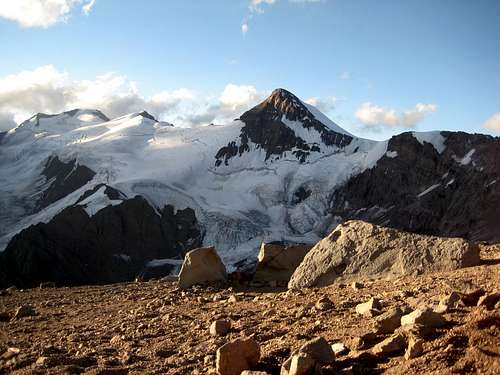
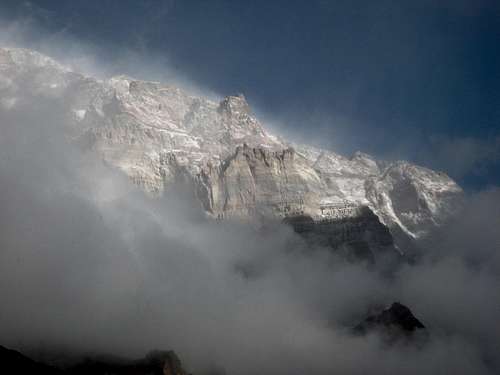




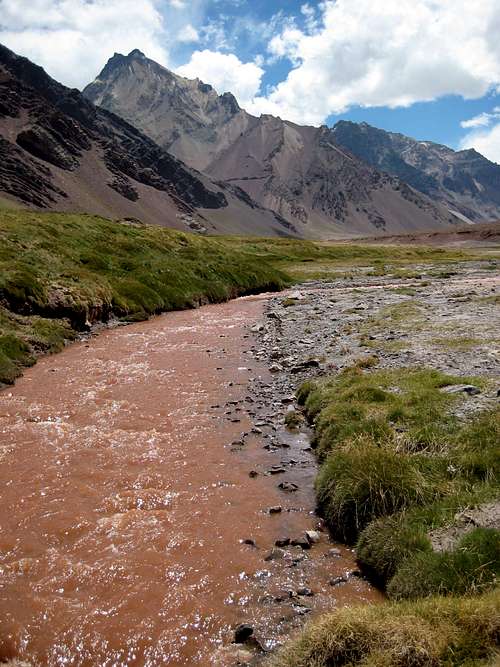


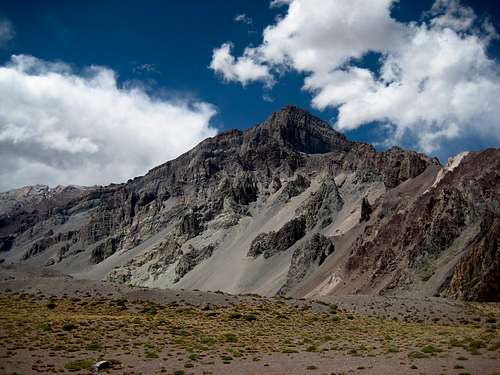

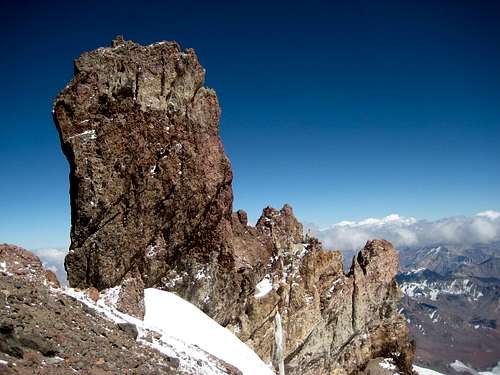

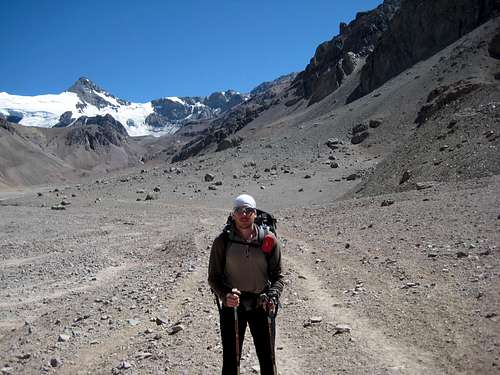





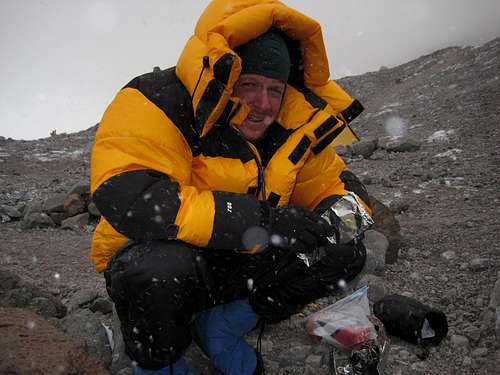
















Comments
Post a Comment